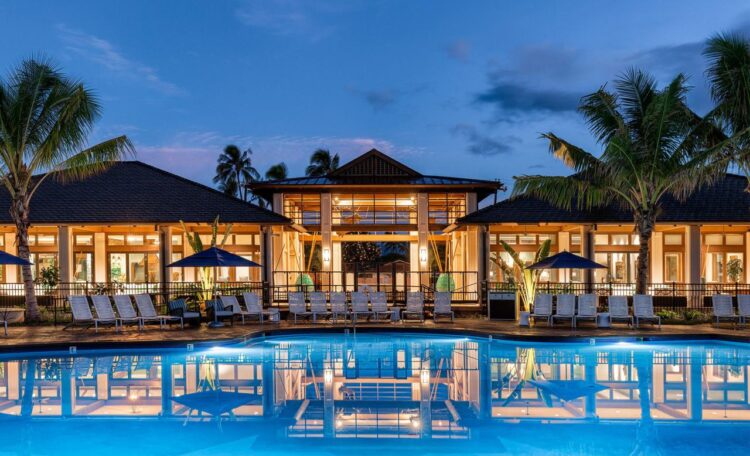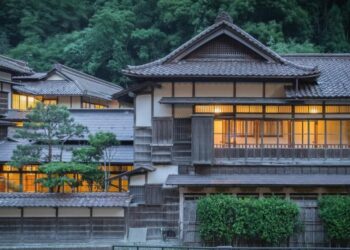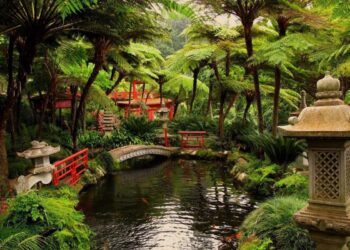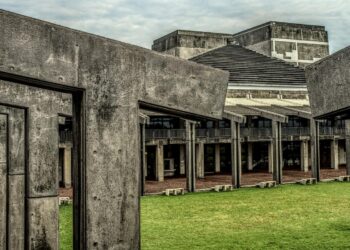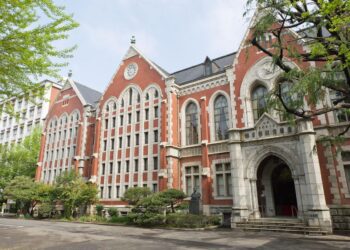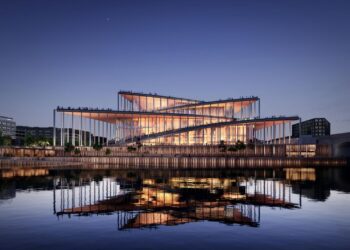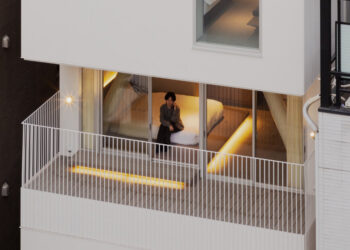In the competitive world of hospitality, resort architecture has transcended its traditional role of merely providing shelter to become a pivotal element in crafting unforgettable guest experiences. It’s no longer enough for a resort to simply offer amenities; its very design must transport, inspire, and deeply connect guests with their surroundings, creating a true sense of escape and rejuvenation. The most successful resorts today seamlessly blend innovative design with their natural and cultural contexts, creating harmonious havens that resonate deeply with discerning travelers. This comprehensive article delves into the profound importance of this architectural philosophy, explores the diverse elements that contribute to its success, highlights the challenges inherent in such ambitious undertakings, and charts the future trends poised to redefine the art and science of resort design.
The Key Principles of Resort Architecture Blends
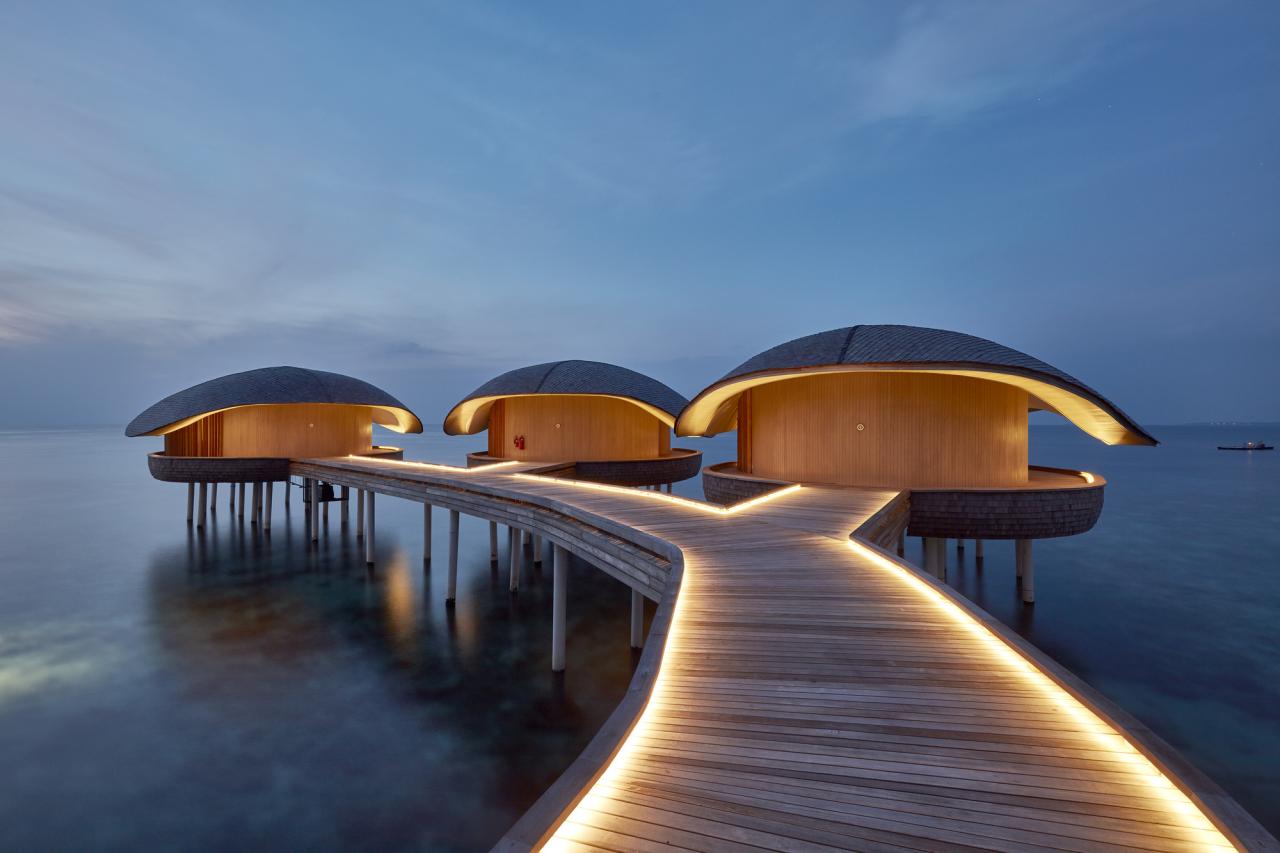
Resort architecture, at its best, is a delicate dance between built environments and the natural world, infused with local identity. It’s about creating spaces that are aesthetically pleasing, highly functional, and deeply evocative, enhancing the guest’s overall journey. A true “blend” implies a design that feels organic, as if it has always belonged to its location, rather than being merely imposed upon it.
Key principles that define successful resort architecture blends include:
A. Contextual Sensitivity:
A.1. Site Integration: The architecture should respect and respond to the specific topography, climate, vegetation, and natural features of the site. This means building with the landscape, not against it.
A.2. Local Materials: Utilizing indigenous materials (stone, wood, thatch, local fabrics) not only reduces environmental impact but also grounds the resort firmly in its locale, imparting authenticity.
A.3. Climate Adaptation: Designs that naturally adapt to the climate, employing passive cooling, natural ventilation, optimal sun shading, and rainwater harvesting, reducing reliance on artificial systems.
B. Cultural Immersion and Authenticity:
B.1. Reflecting Local Heritage: Incorporating traditional architectural styles, motifs, craftsmanship, and artistic expressions that tell the story of the region’s culture and history.
B.2. Community Engagement: Involving local artisans, builders, and suppliers in the construction and operation, fostering economic benefits for the community and ensuring cultural integrity.
B.3. Sensory Experience: Designing spaces that appeal to all senses, including local scents, sounds, and textures, creating a holistic cultural immersion.
C. Sustainable Design Principles:
C.1. Minimizing Environmental Footprint: Employing eco-friendly construction techniques, renewable energy sources, efficient water management (recycling, greywater systems), and responsible waste management.
C.2. Biodiversity Preservation: Protecting and enhancing local flora and fauna, often through integrated landscape design that supports native ecosystems.
C.3. Low-Impact Development: Designing structures and infrastructure to minimize disturbance to the natural environment during construction and operation.
D. Holistic Guest Experience:
D.1. Seamless Indoor-Outdoor Flow: Creating transitions between interior spaces and external natural elements, blurring boundaries and maximizing connection with the surroundings.
D.2. Privacy and Seclusion: Designing units and common areas to offer optimal privacy and a sense of exclusive escape.
D.3. Sensory Journey: Curating experiences that stimulate all senses, from the views and natural light to the sounds of nature, tactile materials, and even ambient scents.
D.4. Wellness Integration: Incorporating spaces and features that promote guest well-being, such as natural light, fresh air, access to nature, and dedicated wellness facilities.
E. Functional Excellence and Operational Efficiency:
E.1. Thoughtful Layout: Designing intuitive layouts that facilitate guest movement, access to amenities, and efficient staff operations.
E.2. Durability and Maintainability: Choosing materials and construction methods that ensure longevity and ease of maintenance in challenging resort environments.
E.3. Technological Integration (Subtle): Incorporating smart room controls, efficient lighting systems, and seamless connectivity in a way that enhances comfort without detracting from the natural aesthetic.
A truly blended resort is a destination in itself, where the architecture is not just a backdrop but an active participant in creating a memorable, restorative, and authentic experience for every guest.
The Imperative of Blended Resort Architecture
In today’s discerning travel market, simply building a hotel in a beautiful location is no longer sufficient. The demand for authentic, unique, and responsible travel experiences has made blended resort architecture an absolute necessity for success.
The urgency for this architectural approach is driven by several key factors:
A. Evolving Traveler Demands:
A.1. Authenticity: Modern travelers seek genuine experiences that connect them with local culture and nature, moving away from generic, interchangeable resorts.
A.2. Wellness and Retreat: There’s a growing desire for spaces that promote mental and physical well-being, offering a true escape from urban stress, which natural integration greatly facilitates.
A.3. Experiential Travel: Guests want immersive experiences, where the accommodation itself is part of the adventure, not just a place to sleep.
B. Environmental Consciousness:
B.1. Sustainability as a Core Value: Growing awareness of climate change and environmental degradation means guests increasingly choose resorts that demonstrate a genuine commitment to sustainability and conservation.
B.2. Reduced Ecological Footprint: Resorts are under pressure to minimize their impact on fragile ecosystems, making eco-conscious design not just a marketing point but a necessity for long-term viability.
B.3. Regulatory Compliance: Increasingly stringent environmental regulations require responsible planning and construction practices.
C. Competitive Differentiation:
C.1. Unique Selling Proposition (USP): Blended architecture creates a distinct identity that sets a resort apart from competitors, appealing to a niche of travelers willing to pay a premium for unique experiences.
C.2. Brand Storytelling: The design can become a powerful narrative tool, telling the story of the place, its people, and its natural beauty, enhancing brand appeal.
C.3. Social Media Appeal: Visually stunning and unique architectural features often become highly shareable content on social media, providing organic marketing.
D. Long-Term Economic Viability:
D.1. Operational Efficiency: Climate-responsive design reduces energy and water consumption, leading to lower operating costs over time.
D.2. Resilience: Building with local materials and respecting natural systems can make resorts more resilient to climate impacts and natural disasters.
D.3. Community Integration: Positive relationships with local communities fostered through cultural integration can lead to long-term stability and support.
E. Preservation of Natural and Cultural Heritage:
E.1. Protecting Pristine Locations: Responsible design ensures that development does not irrevocably damage the very natural beauty that attracts guests.
E.2. Safeguarding Local Traditions: Incorporating local craftsmanship and architectural styles helps preserve intangible cultural heritage.
In sum, blended resort architecture is not a trend but a fundamental shift towards more responsible, authentic, and impactful development within the hospitality sector, ensuring both profitability and planetary stewardship.
Key Elements of a Harmonious Blend
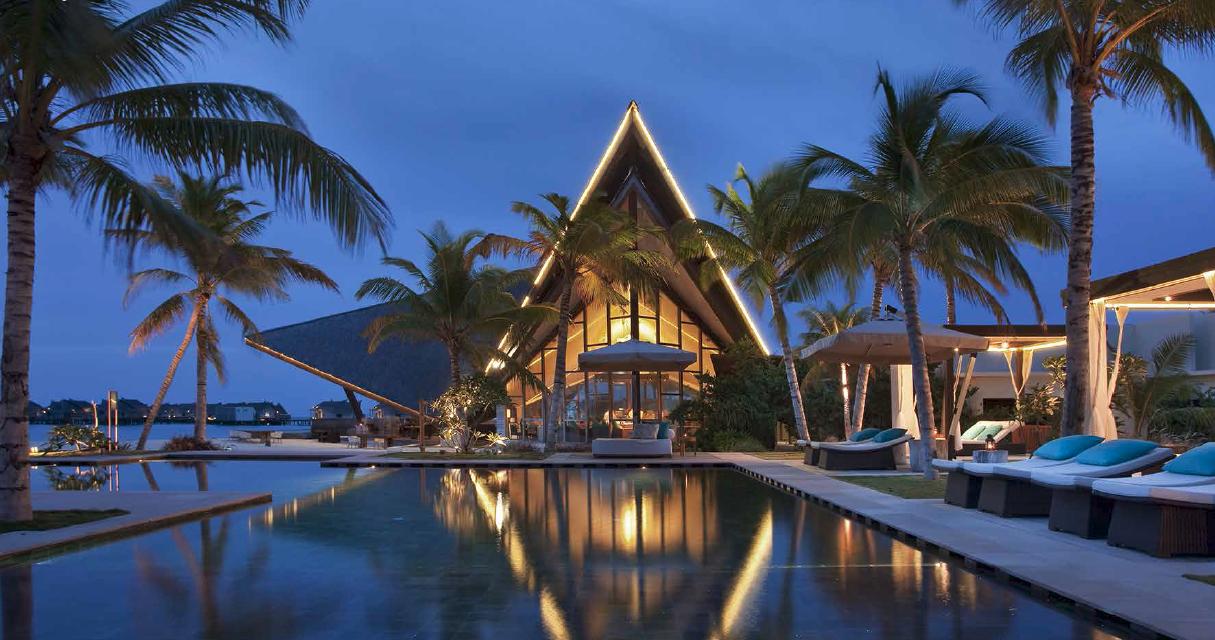
Achieving a seamless blend in resort architecture involves a meticulous consideration of various design elements, each playing a crucial role in the overall harmony.
A. Site Planning and Landscape Integration:
A.1. Minimal Disturbance: Positioning buildings to minimize earthworks, tree removal, and disruption to natural water flows.
A.2. Topographical Response: Designing structures that conform to the natural contours of the land (e.g., terraced buildings on hillsides) rather than imposing flat, alien forms.
A.3. Native Landscaping: Utilizing endemic plants, trees, and shrubs that thrive in the local climate, require less water, and support local wildlife, blurring the line between built and natural.
A.4. View Optimization: Strategic placement of structures and openings to maximize scenic views while ensuring privacy.
B. Material Selection and Craftsmanship:
B.1. Local and Sustainable Materials: Prioritizing locally sourced, renewable, recycled, or low-impact materials (e.g., reclaimed timber, local stone, bamboo, responsibly sourced thatch, rammed earth).
B.2. Embodied Energy Consideration: Choosing materials with low embodied energy (the energy consumed in their production, transport, and disposal).
B.3. Authentic Craftsmanship: Incorporating traditional building techniques and engaging local artisans, which adds character, supports local economies, and ensures cultural relevance.
C. Architectural Form and Style:
C.1. Contextual Form: Designing building forms that resonate with the local architectural vernacular, climate, and landscape scale, avoiding jarring contrasts.
C.2. Passive Design Principles: Employing design strategies that naturally regulate indoor temperatures, such as strategic window placement for cross-ventilation, appropriate shading (overhangs, louvers), thermal mass for heat retention/release, and orientation to sunlight and prevailing winds.
C.3. Biomimicry: Drawing inspiration from natural forms, patterns, and processes in the local ecosystem to inform structural design, material choices, and functionality.
D. Water and Energy Management Systems:
D.1. Renewable Energy Integration: Incorporating solar panels (often discreetly), wind turbines, or geothermal systems to meet energy demands.
D.2. Water Harvesting and Recycling: Implementing rainwater harvesting systems, greywater recycling, and blackwater treatment to minimize reliance on external water sources and reduce discharge.
D.3. Efficient Fixtures: Using low-flow toilets, showerheads, and energy-efficient appliances.
D.4. Smart Building Technology: Utilizing automated systems for lighting, HVAC, and energy monitoring to optimize resource consumption.
E. Interior Design and Furnishings:
E.1. Natural Color Palettes: Using colors and textures inspired by the surrounding environment to create a sense of calm and continuity.
E.2. Local Art and Decor: Adorning interiors with locally made art, textiles, and artifacts that reflect the region’s cultural identity.
E.3. Biophilic Design: Incorporating natural elements, patterns, and light into interiors to enhance human connection with nature and improve well-being.
E.4. Seamless Transitions: Designing interior spaces that flow naturally into outdoor areas, using large windows, sliding doors, and consistent material palettes.
Each of these elements, when thoughtfully integrated, contributes to a cohesive architectural narrative that celebrates both human comfort and environmental harmony.
Benefits of Blended Resort Architecture
The adoption of this holistic architectural approach yields a multitude of advantages that resonate across environmental, social, and economic dimensions, reinforcing its long-term viability.
A. Enhanced Guest Experience and Satisfaction:
A.1. Unique and Memorable Stays: Guests seek distinctive experiences; architecture that tells a story and deeply connects them to the locale stands out and fosters lasting memories.
A.2. Increased Sense of Place: The design creates an authentic “sense of place,” making guests feel truly immersed in the destination’s culture and nature.
A.3. Improved Well-being: Connection to nature through biophilic design elements reduces stress, improves mood, and promotes relaxation, leading to higher guest satisfaction.
A.4. Stronger Emotional Connection: Guests develop a deeper appreciation for the environment and culture, translating into loyalty and positive word-of-mouth.
B. Environmental Stewardship and Sustainability:
B.1. Reduced Carbon Footprint: Energy-efficient design, renewable energy integration, and local material sourcing significantly lower operational greenhouse gas emissions.
B.2. Water Conservation: Smart water management systems drastically reduce water consumption and minimize wastewater discharge.
B.3. Biodiversity Protection: Thoughtful site planning and native landscaping protect and enhance local ecosystems, contributing to conservation efforts.
B.4. Waste Reduction: Sustainable construction practices and operational waste management programs minimize landfill contributions.
C. Economic Viability and Operational Efficiency:
C.1. Lower Operating Costs: Reduced energy and water consumption directly translate into substantial savings on utility bills over the resort’s lifespan.
C.2. Increased Property Value: Sustainable and contextually sensitive designs often command higher market value and appeal to a premium segment of travelers.
C.3. Longer Lifespan of Materials: Using durable, locally appropriate materials often leads to lower maintenance costs and greater resilience to local climate conditions.
C.4. Attraction of Eco-Conscious Travelers: Taps into the growing market of environmentally and socially responsible tourists, often willing to pay more.
D. Social Responsibility and Community Engagement:
D.1. Local Economic Impact: Utilizing local labor, artisans, and suppliers during construction and operation creates jobs and injects capital into the local economy.
D.2. Cultural Preservation: Promoting and showcasing local crafts, art, and building traditions helps preserve cultural heritage.
D.3. Positive Community Relations: Resorts that respect and integrate with local communities often enjoy better social license to operate and reduced conflict.
E. Resilience to Climate Change:
E.1. Natural Hazard Mitigation: Designs that adapt to local climate and geological conditions (e.g., hurricane-resistant structures in coastal areas, earthquake-resistant in seismic zones) increase resilience.
E.2. Reduced Vulnerability: Less reliance on external resources and more adaptation to local conditions makes resorts less vulnerable to supply chain disruptions or resource scarcity.
The holistic approach of blended resort architecture creates a virtuous cycle, where responsible design leads to superior guest experiences, which in turn ensures long-term economic success and positive impact.
Challenges and Considerations in Achieving the Blend
Despite the compelling benefits, successfully implementing blended resort architecture is a complex undertaking fraught with significant challenges that demand expertise, foresight, and a long-term vision.
A. Cost Implications:
A.1. Higher Upfront Investment: Sustainable materials, specialized passive design elements, and integrating complex environmental systems can sometimes have higher initial costs than conventional construction.
A.2. Specialized Labor: Sourcing skilled local artisans or training conventional labor in traditional techniques can add to costs and complexity.
A.3. Regulatory Navigations: Compliance with stringent environmental regulations or unique local building codes can require additional planning and investment.
B. Technical and Design Complexity:
B.1. Site-Specific Solutions: Each site is unique, requiring bespoke architectural solutions rather than cookie-cutter designs, which increases design complexity and time.
B.2. Integration of Systems: Seamlessly integrating passive design strategies with modern HVAC, plumbing, and smart technologies requires sophisticated engineering and coordination.
B.3. Material Sourcing and Quality Control: Ensuring consistent quality and supply of local, sustainable materials, especially in remote locations, can be challenging.
C. Environmental and Social Impact Management:
C.1. Construction Impact: The construction phase itself can cause significant environmental disruption (e.g., erosion, pollution, habitat destruction) if not meticulously managed.
C.2. Carrying Capacity: Determining the ecological carrying capacity of a sensitive natural environment to avoid overdevelopment and long-term degradation.
C.3. Community Relations: Gaining local community buy-in, managing expectations, and ensuring equitable benefits can be delicate social processes.
C.4. Authenticity vs. Commercialism: Striking a balance between incorporating genuine local culture and avoiding tokenism or superficial “greenwashing.”
D. Maintenance and Operations:
D.1. Specialized Maintenance: Sustainable systems (e.g., rainwater harvesting, solar panels) and traditional materials may require specialized maintenance knowledge and practices.
D.2. Staff Training: Training resort staff on sustainable operational practices and the stories behind the architecture and culture is crucial for delivering the intended guest experience.
D.3. Remote Locations: Many resorts are in remote areas, posing logistical challenges for material delivery, skilled labor, and ongoing maintenance.
E. Regulatory and Permitting Hurdles:
E.1. Complex Approvals: Obtaining environmental permits and building approvals in ecologically sensitive or culturally significant areas can be lengthy and challenging.
E.2. Evolving Standards: Staying abreast of rapidly evolving sustainability standards and green building certifications.
Overcoming these challenges requires a strong vision from developers, a highly skilled interdisciplinary design team (architects, landscape architects, environmental consultants, cultural advisors), and a deep commitment to long-term sustainability over short-term gains.
Pioneering Trends Shaping The Future of Resort Architecture
The landscape of resort architecture is continually evolving, driven by new technologies, heightened environmental awareness, and a quest for deeper, more meaningful guest interactions.
A. Hyper-Contextual Design (Beyond Aesthetics):
A.1. Data-Driven Site Analysis: Utilizing advanced GIS, environmental modeling, and local climate data to inform every aspect of design, from building orientation to material selection, ensuring optimal performance.
A.2. “Living Buildings” and Regenerative Design: Moving beyond just minimizing impact to designing resorts that actively regenerate their surrounding ecosystems, producing more energy than they consume, treating water, and enhancing biodiversity.
A.3. Local Ecosystem Integration: Designing not just within nature but as part of it, with structures that might host native species or integrate natural water purification systems.
B. Immersive Storytelling and Digital Integration (Subtle):
B.1. Narrative Architecture: Resorts designed around a compelling narrative that unfolds as guests move through spaces, telling the story of the land, its people, or an ecological theme.
B.2. Augmented Reality (AR) Experiences: Subtle AR overlays on personal devices that provide historical context, ecological information, or interactive cultural insights as guests explore the resort grounds.
B.3. Personalized Digital Concierge: Smart systems that adapt room settings, suggest activities, and provide information tailored to individual guest preferences, seamlessly integrated into the physical environment.
C. Modular and Prefabricated Sustainable Construction:
C.1. Reduced Site Impact: Off-site construction of prefabricated modules minimizes disruption to sensitive ecosystems and reduces waste on-site.
C.2. Efficiency and Quality Control: Precision manufacturing in controlled environments ensures higher quality and faster construction timelines, reducing costs.
C.3. Portability and Adaptability: Modular units can potentially be relocated or reconfigured, offering greater flexibility and sustainability over time.
D. Wellness and Biophilic Immersion (Deeper Dive):
D.1. Sensory Architecture: Designs specifically crafted to stimulate and soothe the senses through natural light, specific materials, water features, and curated acoustics.
D.2. Healing Environments: Resorts focusing on therapeutic design, integrating elements known to reduce stress and promote healing (e.g., forest bathing, sound therapy spaces).
D.3. Nutritional and Agricultural Integration: Resorts incorporating on-site organic farms, permaculture gardens, and farm-to-table dining experiences, deepening the connection to food sources.
E. Community-Centric Development:
E.1. Co-creation with Indigenous Communities: True partnerships with indigenous peoples, ensuring their knowledge, traditions, and land rights are respected and integrated into the resort’s design and operation.
E.2. Shared Value Creation: Models where the resort genuinely contributes to the long-term well-being and economic empowerment of the local community, not just through employment.
E.3. Cultural Exchange Hubs: Designing spaces within resorts that facilitate genuine cultural exchange and learning experiences for guests and locals alike.
These trends highlight a future where resort architecture is not just about aesthetics or luxury, but about creating profound, responsible, and enduring connections between people, place, and planet.
Conclusion
The evolution of resort architecture stands as a powerful testament to the changing ethos of travel and hospitality. The superficial allure of generic luxury is yielding to a deeper appreciation for authentic connection, environmental responsibility, and culturally resonant design. The most visionary resorts are no longer just places to stay; they are meticulously crafted experiences, where every architectural detail, every material choice, and every landscape intervention works in seamless harmony to create a truly blended haven.
While the complexities of sustainable sourcing, technical integration, and community engagement present considerable challenges, the benefits—from enhanced guest well-being and reduced operational costs to genuine environmental stewardship and strengthened local economies—are undeniable. As we move forward, the future of resort design will be characterized by hyper-contextual sensitivity, regenerative principles, and a subtle yet powerful integration of technology, all aimed at fostering a profound respect for both people and planet. The art of blending architecture with its surroundings is not merely a design trend; it is the imperative for creating truly memorable, meaningful, and responsible destinations for generations to come.

